Need a last-minute dessert that'll impress without keeping you chained to the kitchen? This Pineapple Gulaman is my go-to rescue recipe. When unexpected guests are coming or I simply crave something sweet and refreshing, I whip this up in under 30 minutes (plus chilling time).
While the gulaman sets in the fridge, you're free to handle other things. What I love most is how this dessert combines creamy richness from evaporated milk with bright pineapple flavors, while the raisins add little bursts of sweetness in every bite.
Unlike fussy desserts that require precise timing, this recipe is remarkably forgiving. The firm texture of gulaman (agar) means it holds up beautifully even if you leave it in the fridge overnight, making it perfect for advance preparation.
What is Gulaman?
Gulaman is a vegetable-based gelatin derived from red algae that creates a distinctively firm, clean-breaking texture unlike conventional gelatin desserts. This beloved Filipino dessert has been a staple in households for generations, offering a refreshing treat perfect for the tropical climate.
Jump to:
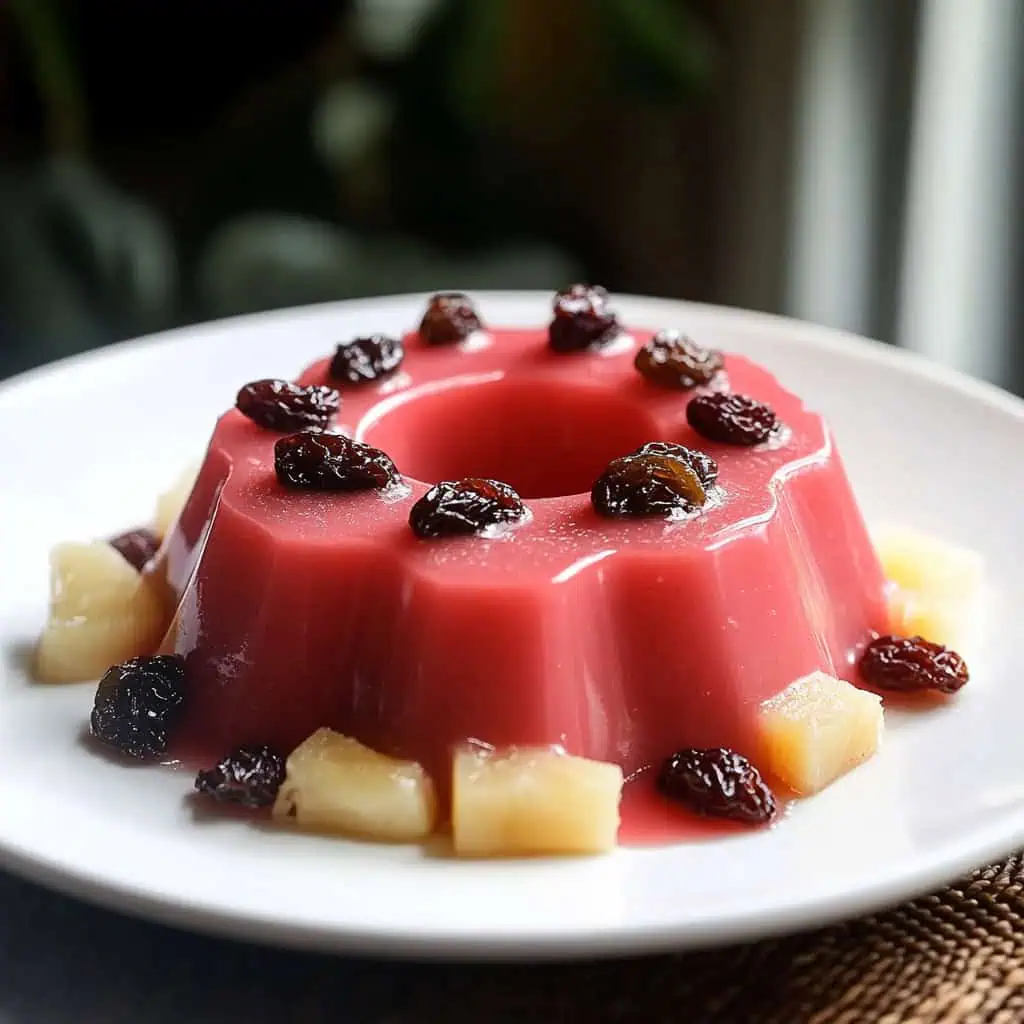
Why You'll Love This Recipe
Experience the perfect balance of creamy and refreshing flavors in this classic Filipino dessert. The gulaman (agar) creates a uniquely firm texture that's distinctly different from regular gelatin, while the combination of pineapples and raisins adds delightful bursts of natural sweetness. This recipe is not only economical but also vegetarian-friendly, making it perfect for gatherings and everyday treats.
Ingredients
Each ingredient in this recipe plays an essential role in creating the perfect gulaman experience. The red gulaman provides the distinctive firm texture that holds everything together. Evaporated milk creates the creamy richness that balances the refreshing quality of the dessert.
Canned pineapples offer bright, tropical flavor and their juice enhances the overall taste profile. Raisins add bursts of concentrated sweetness and textural contrast. Sugar and vanilla round out the flavors, with vanilla adding depth and warmth to this cool, refreshing treat.
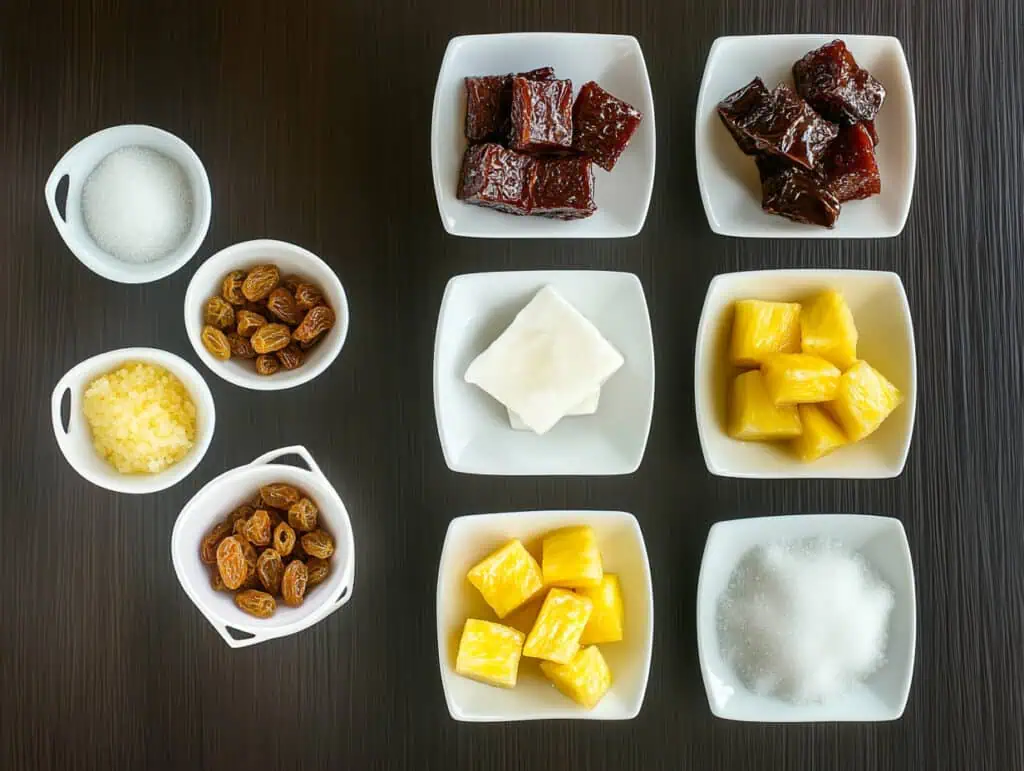
- 2 bars red gulaman or 24g jelly powder
- 1 liter water
- 400 ml evaporated milk
- 400 g canned pineapple cubed (reserve juice)
- ½ cup raisins
- 1½ cups sugar
- 1 teaspoon vanilla extract
Equipment
- Large saucepan (Kaserola) - For dissolving the gulaman and combining all ingredients thoroughly without overflow
- Wooden spoon (sandok na kahoy) - For stirring without scratching the pan and ensuring even heat distribution
- Measuring cups and spoons - For precise ingredient portions which is crucial for proper setting
- Jelly mold or rectangular container - For setting the dessert in your desired shape
- Fine-mesh strainer - Optional, for ensuring a perfectly smooth texture by removing any undissolved particles
- Rubber spatula - For scraping sides and transferring mixture without waste
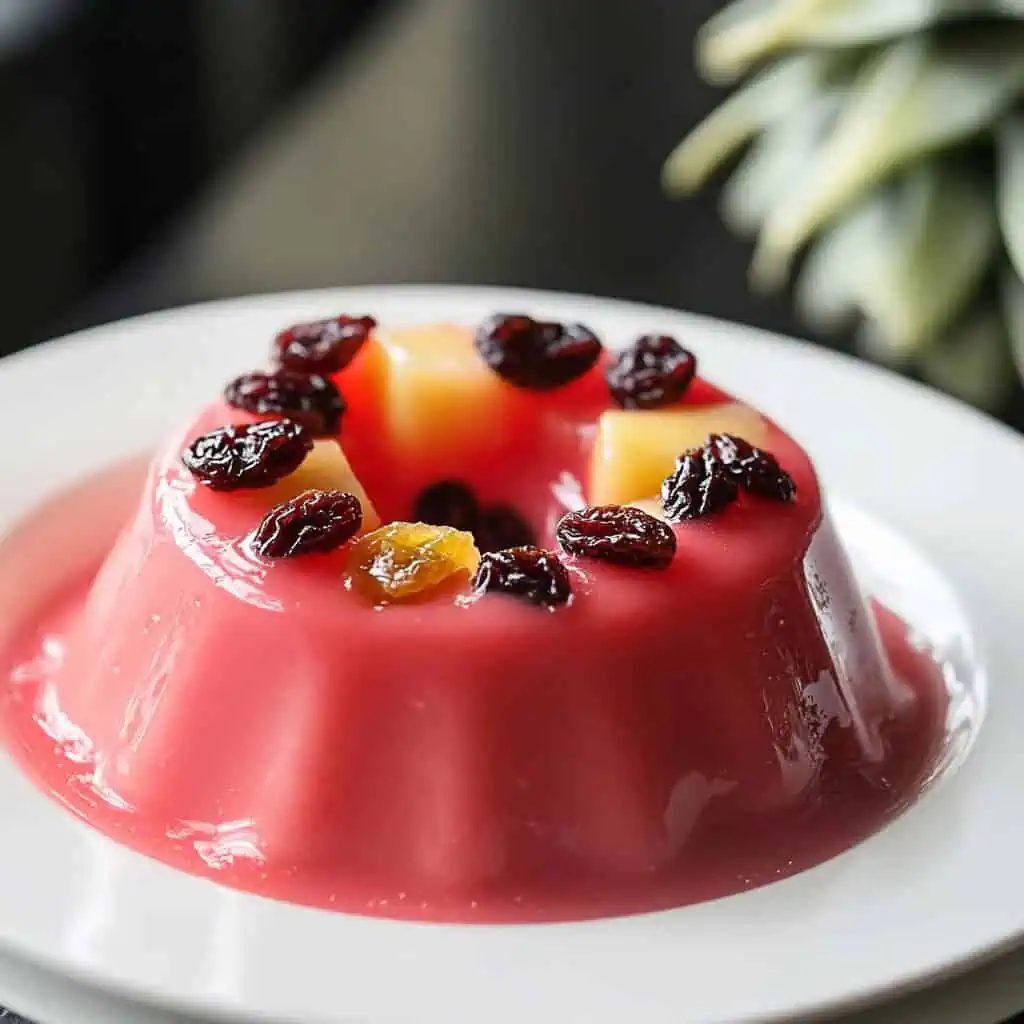
How To Make
- Break the red gulaman bars into small pieces and place them in a large saucepan. If using gulaman powder instead, simply pour it into the pan. Add the water, pineapple juice from your canned pineapples, and sugar. Turn your heat to medium-high and bring everything to a boil.
- Once boiling, lower the heat to medium-low and simmer for 15 minutes. Keep stirring occasionally until you can't see any gulaman pieces anymore. If you lift your spoon, the liquid should run clear without any particles.
- Take your pan off the heat and stir in the evaporated milk and vanilla extract right away. Let this cool for 5 minutes, giving it a gentle stir now and then to prevent a skin from forming on top. The mixture will start to thicken slightly.
- When the mixture has cooled a bit but is still easy to pour, add your pineapple chunks and raisins. Pour everything into your mold or container. Here's a helpful tip: rinse your mold with cold water first – this will make it easier to remove the gulaman later.
- Let it cool on your counter for about 15 minutes, then put it in the refrigerator. Leave it there for at least 4 hours or overnight. You'll know it's ready when it feels firm to the touch and doesn't wobble when you tilt the container.
- When you're ready to serve, run a knife around the edges of your mold. Dip the bottom quickly in warm water for 10 seconds, then turn it over onto your serving plate. If it sticks, gently tap the bottom of the mold. Serve it cold.
- Keep your gulaman covered in the refrigerator and enjoy it within 5 days. If the surface starts to look dry, just cover it with plastic wrap.
Remember: This recipe is pretty forgiving – the most important thing is making sure your gulaman is completely dissolved before adding the milk. Even if it's not perfect the first time, it'll still taste delicious!

Tips from Lola's Kitchen
- Achieving Perfect Clarity: Test if gulaman is fully dissolved by lifting your spoon - the liquid should be completely clear without any visible particles. Hold it up to the light to check for clarity.
- Even Distribution of Add-ins: To prevent ingredients from sinking, wait until the mixture starts to thicken (about 10-15 minutes after adding milk) before adding fruits and raisins. Stir gently but thoroughly.
- Silky Smooth Texture: For an exceptionally smooth texture, strain the mixture through a fine-mesh sieve before adding fruits. This extra step removes any tiny undissolved particles.
- Easy Unmolding Trick: Wet your mold with cold water before pouring in the mixture - this creates a thin water barrier that helps the gulaman release perfectly when unmolding.
- Perfect Sweetness: Taste your mixture before adding the fruits. Remember that canned pineapples already contain sugar, so you might want to adjust the sweetness according to your preference.
- Stunning Presentation: For a professional-looking dessert, reserve some pineapple pieces and raisins to arrange at the bottom of the mold before pouring in the mixture. When unmolded, these will be displayed beautifully on top.
Substitutions
- Gulaman: Can substitute with clear gulaman or agar powder. If using unflavored gelatin, use 2 tablespoons but note that the texture will be softer.
- Evaporated Milk: Fresh milk works but produces a lighter flavor. For richer results, try all-purpose cream or a combination of condensed milk (reduce sugar) and fresh milk.
- Pineapples: Fruit cocktail offers a delightful variety of flavors and textures. Nata de coco (coconut gel) provides a wonderful chewy contrast to the smooth gulaman.
- Raisins: Dried cranberries add a pleasant tartness, while chopped dates provide caramel notes. Shredded young coconut (buko) creates an authentic Filipino flavor profile.
- Sugar: Brown sugar imparts a deeper molasses flavor. Honey or agave syrup can be used (reduce by 25% and adjust to taste) for a different sweetness profile.
- Flavorings: Beyond vanilla, try almond extract, coconut extract, or pandan essence for unique flavor variations.
Troubleshooting
- Gulaman Too Firm: If your gulaman feels more like rubber than jelly, you've used too much gulaman powder or bars. Next time, reduce the amount by about 20%.
- Ingredients Sinking to Bottom: This happens when the mixture hasn't thickened enough before adding fruits. Next time, let the mixture cool longer until it reaches a syrupy consistency.
- Not Setting Properly: Ensure you've used the proper gulaman-to-liquid ratio and that the gulaman is completely dissolved. Also check that your refrigerator is cold enough (below 40°F/4°C).
- Cloudy Appearance: This is usually caused by undissolved particles or adding the milk while the mixture is too hot. Strain the mixture and ensure it's cooled slightly before adding milk.
- Skin Forming on Top: This happens when the mixture cools exposed to air. Stir occasionally while cooling or place plastic wrap directly on the surface.
- Grainy Texture: The gulaman wasn't fully dissolved. Next time, increase simmering time and stir more frequently.
Storage & Reheating
- Refrigeration: Keeps beautifully for up to 5 days in the refrigerator. The texture may become slightly firmer over time.
- Storage Container: Keep covered with plastic wrap or in an airtight container to prevent absorption of refrigerator odors and to maintain moisture.
- Not Suitable for Freezing: Freezing will damage the molecular structure of gulaman, causing it to weep liquid when thawed.
- Serving Temperature: Best served chilled; no reheating required. Allow to sit at room temperature for 5 minutes before serving for the best flavor experience.
- Reviving Dry Surfaces: If the surface becomes dry after a few days, you can refresh it by brushing with a thin layer of simple syrup.
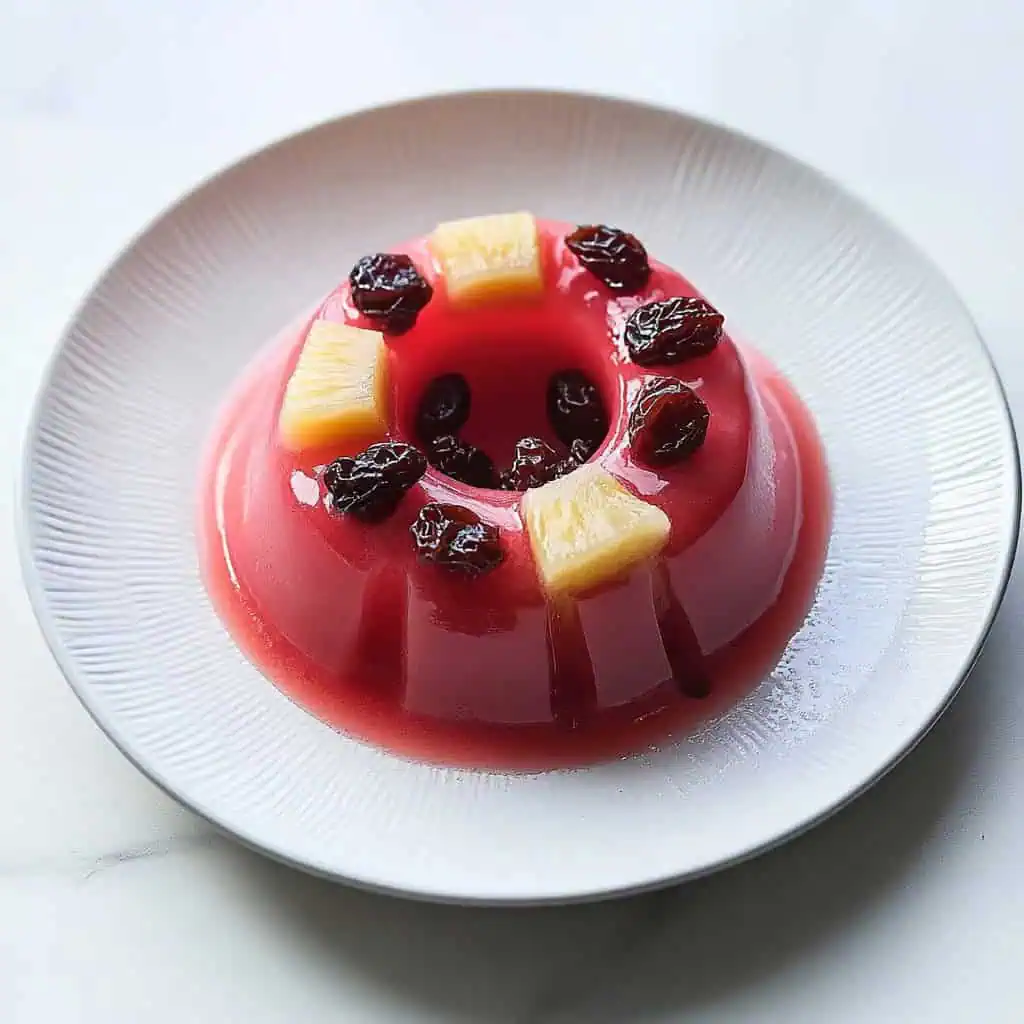
FAQ
What's the difference between gulaman and regular gelatin?
Gulaman (agar) is plant-based and sets more firmly than animal-derived gelatin. It remains solid at room temperature, has a cleaner bite, and is suitable for vegetarians. It also sets at a higher temperature and doesn't melt as easily in warm conditions.
Can I use fresh pineapples instead of canned?
Fresh pineapples contain enzymes (bromelain) that can prevent setting. If you prefer fresh pineapples, you must cook them first for at least 5 minutes to neutralize these enzymes. Canned pineapples work best because the canning process has already deactivated these enzymes.
Why did my gulaman become grainy?
This happens when the gulaman isn't completely dissolved. Ensure thorough dissolution by simmering until the liquid is completely clear and no particles are visible when lifting your spoon.
How can I create layered gulaman?
For beautiful layers, prepare your first layer and let it set until firm enough that it doesn't dent when touched (about 1 hour). Then pour your next layer at room temperature (not hot) to prevent melting the first layer.
Is this dessert dairy-free?
Not with evaporated milk, but you can substitute coconut milk for a dairy-free version with a tropical twist. The texture will be slightly different but equally delicious.
Can I make this ahead for a party?
Absolutely! This is an ideal make-ahead dessert that actually improves after setting overnight as the flavors meld together. Make it up to 2 days in advance for best results.
My gulaman feels too soft. What went wrong?
You may have used too little gulaman powder or not simmered it long enough to activate its setting properties. Next time, measure carefully and ensure a full 15-minute simmer.
How do I know when the gulaman is fully dissolved?
The mixture should be completely transparent when lifted in a spoon, with no visible particles. If in doubt, simmer for an additional 5 minutes, stirring constantly.
Related
Looking for other recipes like this? Try these:

Creamy Pineapple Gulaman with Raisins (Filipino Agar Jelly Dessert)
Equipment
- Large saucepan (Kaserola) For dissolving the gulaman and combining ingredients
- Wooden spoon (sandok na kahoy) For stirring without scratching the pan
- Measuring cups and spoons (Panukat) For precise ingredient portions
- Jelly mold or rectangular container For setting the dessert
- Fine-mesh strainer (salaan) Optional, for ensuring smooth texture
- Rubber spatula For scraping sides and transferring mixture
Ingredients
- 2 bars red gulaman or 24g jelly powder Gulaman
- 1 liter water Tubig
- 400 ml evaporated milk Gatas na evaporada
- 400 g canned pineapple cubed (Pinya)
- ½ cup raisins Pasas
- 1½ cups sugar Asukal
- 1 teaspoon vanilla extract Vanilla
Instructions
- Start by breaking the red gulaman bars into small pieces and place them in a large saucepan. If you're using gulaman powder instead, simply pour it into the pan. Add the water, pineapple juice from your canned pineapples, and sugar. Turn your heat to medium-high and bring everything to a boil.
- Once boiling, lower the heat to medium-low and simmer for 15 minutes. Keep stirring occasionally until you can't see any gulaman pieces anymore. If you lift your spoon, the liquid should run clear without any particles.
- Take your pan off the heat and stir in the evaporated milk and vanilla extract right away. Let this cool for 5 minutes, giving it a gentle stir now and then to prevent a skin from forming on top. The mixture will start to thicken slightly.
- When the mixture has cooled a bit but is still easy to pour, add your pineapple chunks and raisins. Pour everything into your mold or container. Here's a helpful tip: rinse your mold with cold water first – this will make it easier to remove the gulaman later.
- Let it cool on your counter for about 15 minutes, then put it in the refrigerator. Leave it there for at least 4 hours or overnight. You'll know it's ready when it feels firm to the touch and doesn't wobble when you tilt the container.
- When you're ready to serve, run a knife around the edges of your mold. Dip the bottom quickly in warm water for 10 seconds, then turn it over onto your serving plate. If it sticks, gently tap the bottom of the mold. Serve it cold.
- Keep your gulaman covered in the refrigerator and enjoy it within 5 days. If the surface starts to look dry, just cover it with plastic wrap.
- Remember: This recipe is pretty forgiving – the most important thing is making sure your gulaman is completely dissolved before adding the milk. Even if it's not perfect the first time, it'll still taste delicious!
Tips from Lola's Kitchen
- Test if gulaman is fully dissolved by lifting your spoon - the liquid should be completely clear without any visible particles
- To prevent ingredients from sinking, wait until the mixture starts to thicken before adding fruits
- For smoother texture, strain the mixture before adding fruits
- Wet your mold with cold water before pouring in the mixture for easier unmolding
Nutrition
The Story Behind Gulaman with Pineapples and Raisins
In the vibrant tapestry of Filipino desserts, Gulaman with Pineapples and Raisins stands as a testament to the ingenuity of Filipino home cooks who transformed simple ingredients into beloved treats. This refreshing dessert emerged during the Spanish colonial period when agar, derived from seaweed, was introduced to the Philippines through maritime trade routes connecting Manila to other Asian ports.
The evolution of this dessert reflects the Philippines' rich cultural heritage and adaptation of foreign influences. While agar originated in Japan, where it was discovered in the 17th century, Filipinos embraced this versatile ingredient and made it their own. The addition of evaporated milk, a staple introduced during the American colonial period, transformed the traditional gulaman into a creamier, more indulgent version that perfectly suited Filipino tastes.
What makes this dessert particularly significant in Filipino culture is its presence at both everyday merienda (afternoon snacks) and special occasions. In many Filipino households, especially during the warm summer months, this cool and refreshing treat became a practical solution for entertaining guests without requiring extensive preparation or expensive ingredients.
The incorporation of pineapples and raisins into the recipe showcases the Filipino preference for combining different textures and flavors in a single dish. Pineapples, which grow abundantly in the Philippines' tropical climate, add a natural sweetness and slight tanginess that complements the creamy base. The addition of raisins, while not native to the Philippines, demonstrates how Filipino cuisine readily adopts and integrates international ingredients.
Today, this dessert continues to evolve while maintaining its core appeal. Modern versions might feature local fruits or creative variations, but the basic preparation method remains unchanged - a testament to its enduring place in Filipino culinary tradition. Whether served in humble homes or upscale restaurants, Gulaman with Pineapples and Raisins represents the perfect balance of accessibility and sophistication that characterizes many beloved Filipino dishes.
For generations of Filipino families, this dessert has been more than just a sweet treat - it's a reminder of afternoon gatherings, family celebrations, and the simple pleasure of sharing food with loved ones. Its continued popularity in modern Filipino households speaks to its timeless appeal and the way it connects current generations to their culinary heritage.
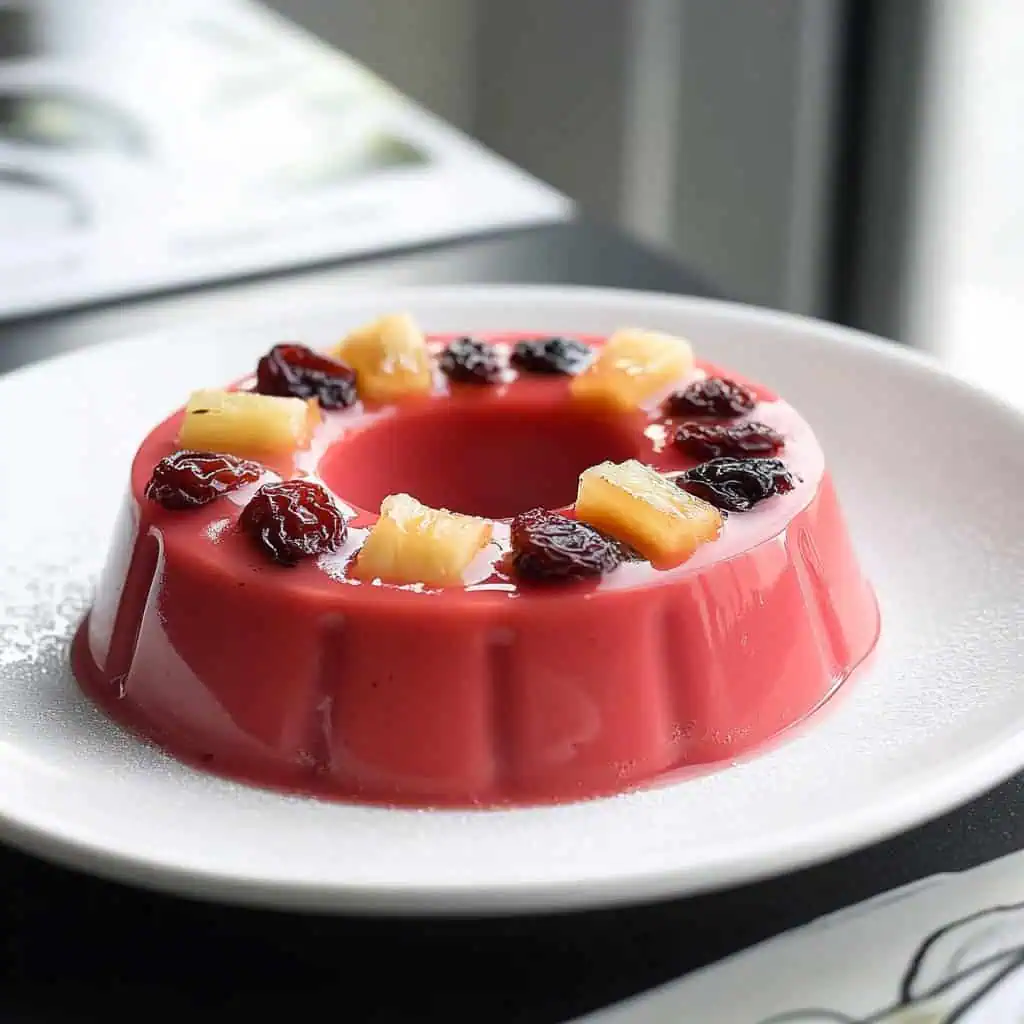







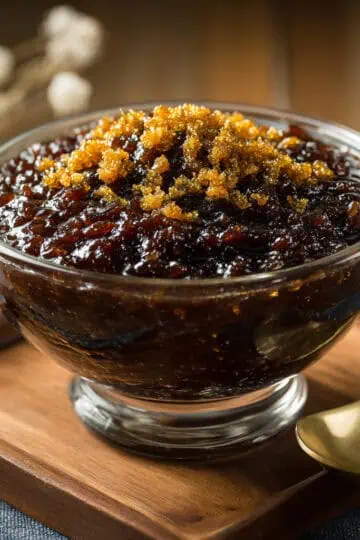
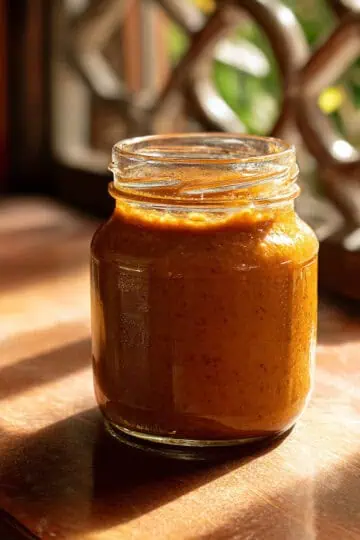
Comments
No Comments